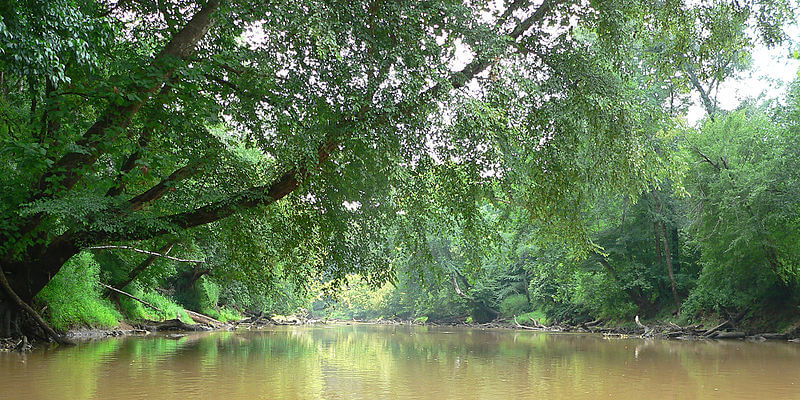Climate change in NC: The time to act is now

From the majestic swoop of a bald eagle clutching a fish in its talons to the awe-inspiring Great Smoky Mountains, nature is amazing and inspirational. Nature can be devastating as well.
The last decade has been the warmest on record for North Carolina, with 2019 registering as the hottest year yet. We are still recovering from being hit with four significant storms in less than five years: Hurricane Matthew (2016), Hurricane Florence (2018), Hurricane Dorian (2019) and Hurricane Isaias this August. Low-lying coastal areas and numerous eastward-flowing rivers make North Carolina particularly vulnerable to flooding.
The impact of climate change can be devastating and manifests in the form of severe weather, flooding, high temperatures, and drought. These conditions create challenges in the daily life of North Carolinians. Climate change has contributed to the decline of wildlife, habitats, ecosystems and economic assets communities rely on.
To combat climate change, investments in natural infrastructure must happen. The cost of storm cleanup and rebuilding far exceeds the necessary funding to make human and natural communities and recreational areas more resilient in the face of climate change.
Better understanding climate change to become more resilient
The North Carolina Climate Risk Assessment and Resilience Plan outlines a strategy for reducing our state’s vulnerability to climate change. The 372-page report released in June identifies more than 50 climate hazards facing NC, many of which affect wildlife and habitat.
Key findings include:
- Plants and animals that rely on cooler temperatures may not be able to thrive in warmer temperatures and may migrate to cooler areas, and/or be out-competed for by other, more heat-tolerant, species.
- Water shortages due to drought increase the risk of catastrophic wildfires and reduce the availability of suitable habitat for wetland and aquatic animal populations.
- Heavy precipitation accompanying hurricanes and other weather systems are likely to increase, thus increasing the potential for flooding in inland and coastal areas.
- Rising sea levels and the increasing intensity of coastal storms will almost certainly lead to an increase in storm surge flooding in coastal North Carolina.
- More frequent flooding will impact inland and coastal habitats, salt and freshwater fisheries, and compromise the protective services that natural areas provide to local communities, such as natural water filtration.
- Loss of wetlands due to sea-level rise will result in habitat losses that will impact both commercial and recreational fisheries, decrease buffering capacity, adversely affect water quality, and reduce the resilience of coastal communities.
- Endangered and threatened species that are vulnerable to storm surges and erosion on beaches will likely decline.
- More intense hurricanes will further damage wetlands and natural barriers, which help protect infrastructure and communities from storm surges, increasing vulnerability to subsequent storms.
- Ocean acidification will threaten the survival of organisms that form calcium-based shells such as oysters and clams, along with the organisms that depend on those species for survival.
- Increased saltwater intrusion due to sea-level rise is expected to change the salinity of estuarine communities and convert lower coastal floodplains from swamp forests to wetlands.
- Climate change can increase the areas where disease-carrying vectors such as mosquitos are present.
Harness nature to combat human-made climate change
In partnership with nonprofits and the federal government, the state needs to invest in floodplain and wetland protections, flood area relocations, coastal habitat protections, and storm resiliency programs such as living shorelines, oyster reefs, barrier islands and revamping road culverts and floodwater inundation infrastructure.
NCWF remains steadfast in advocating for wildlife-friendly energy policies, opposing drilling off the North Carolina outer banks, planting thousands of trees to sequester carbon, reducing the hurricane and storm damage amplified by climate change through resiliency planning and restoration efforts, and connecting habitats to accommodate new migration patterns.
We can’t control nature, but we can harness it. By putting nature to work, we can let:
- Trees in our public lands and elsewhere do their job sequestering carbon. Mature trees sequester substantially more carbon than new growth, though all trees help.
- River buffers and oyster beds soak up sediment and polluted runoff before it gets into our aquatic ecosystems and drinking water.
- Freshwater mussels serve as a backup to filter out pollutants when vegetative buffers are overwhelmed.
- Nursery habitats support successful spawning of marine and freshwater fish.
- Wetlands and coastal marshes soak up flood waters like a sponge.
- Sunlight power our homes and communities.
- Bees and butterflies pollinate home gardens and large-scale agricultural crops.
Investments in natural infrastructure are already overdue. There is no time to lose. The economic and social burdens of storm cleanup and rebuilding far exceeds the cost of preventative measures that will support nature’s inherent ability to manage the impacts of severe weather and climate change. Prioritizing funding to build up our state’s natural resilience will help communities, recreational areas and wildlife endure in the face of climate change.
You can help by planting trees in your own yard and community, volunteering with NCWF to restore wildlife habitat or investing in NCWF’s work. We all make a difference.


